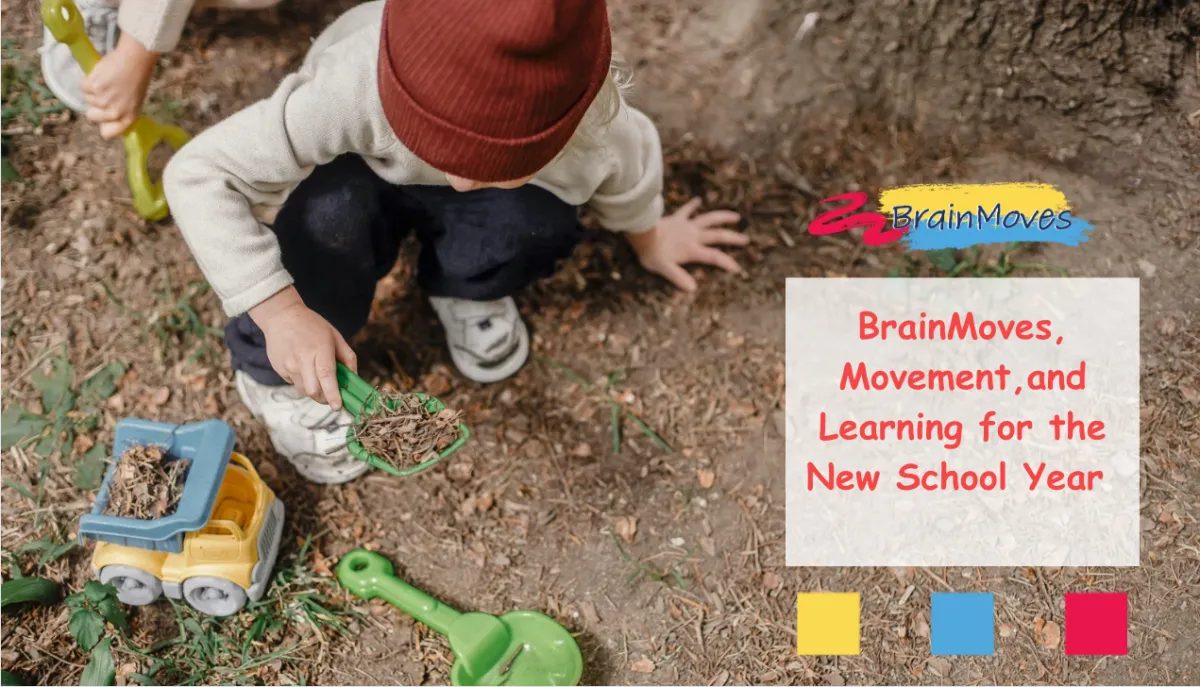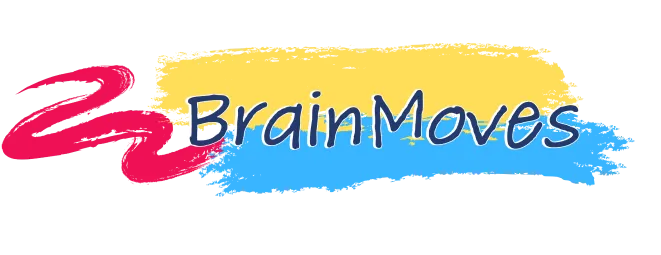
BrainMoves, Movement, and Learning for the New School Year
The new school year is starting. Shoelaces half-tied, their backpacks jostling, everywhere across the United States, parents will send their children to the bus or drop them off for class in various states of energy, movement, and enthusiasm.
School days create lasting memories for families. For parents, it means preparing children for a new year, while children make their own memories by exploring and learning through movement. Activities such as picking up toys, building with blocks, and solving puzzles demonstrate that hands-on movement is crucial for memory. Movement helps children remember and learn more effectively.
You might be wondering: “if movement helps memory, why does my constantly moving child still seem forgetful?” Or maybe you’ve noticed, "They move so much they can’t listen," or "My child crashes into things—this doesn't seem like normal movement!" These concerns are common and highlight how movement patterns affect attention and memory.
Movement plays a crucial role in enhancing memory, making memories stronger and more vivid. Imagine the brain as a band, where different instruments represent various aspects of awareness. Coordinated instruments mean the music and the movement is in harmony.

Proprioception tells the child’s brain where their body is in space
Touch helps the child define pleasure from painful experiences and identify risks based on past outcomes. For example, a child running across a sidewalk on the way to the playground might have a fleeting thought, ” Don't fall on the sidewalk,” warns the brain, “it's hard!”
Pressure or the depth and duration of the touch can create a wide variety of responses and varies person to person. What is the threat of a tickle to one child, and a horrible experience could be a caress to another child.
Biofeedback is the conductor that coordinates these bodily and spatial inputs, ensuring a synchronized performance. Our brains parse and process this data, including feedback from touch and proprioception, to create content and memories.
When we engage in activities that integrate movement with learning, the resulting symphony enriches the learning experience, making memories more resonant and enduring.
Our brains are designed to take in stimuli. If something touches us or we touch it, an automatic program plays in the background of our or our children’s mind. “Is this a threat, a game, a snack or something to be ignored?” This doesn’t just happen when we touch things. It also helps us move through space as our proprioception—think of it like a cat’s whiskers—tells us what is going on around our bodies. When this is in balance, we take in data, sort it, and learn from it, accessing the useful parts. When we can’t sort the data, we become overwhelmed. We see this when our child melts down in the grocery store.
Too much data, candy aisle, nothing left for impulse control; and boom—meltdown. But the opposite—not enough data—is equally challenging. The child may be quiet or easy to get along with but they are clumsy. They can’t focus, and their body is lost in space. They may drop things
a lot or even intentionally bump into things to cause a sharp sensation. This orients them and brings the world to attention.
This principle is especially important for children, who face increasing expectations for memory and concentration as they progress through school. The brain craves motion to encode facts. Studies highlight how movement enhances cognitive functions and memory retention. When learning requires sitting still, children who are uncomfortable or who struggle with movement may find it just as difficult to focus and pay attention.

This can look like ADHD symptoms, hyperactivity, or oppositional behavior, but it is often linked to incomplete developmental movements or reflexes. If a child misses certain movement phases, they may find sitting or staying still uncomfortable.
For instance, difficulties with habits like finger-sucking or nail biting can be linked to oral reflexes that are stuck on, causing a child to focus themselves by using the muscles of the mouth. This reflex can impact a child's verbal and nonverbal communication. Similarly, a child who struggles with clumsiness may have skipped phases that affect their bodily-kinesthetic awareness, including crossing the midline of their body, which relates to body coordination and movement. Teachers and parents can observe that children develop these skills at different times.
Movement challenges can make school difficult. Many teachers and parents see issues like fidgeting, clumsiness, or anxiety in class, often caused by how a child’s body processes movement. Since movement supports memory and focus, addressing these patterns is essential for learning. BrainMoves offers targeted support for these areas.
BrainMoves is a system that helps children learn and find calm by using targeted movements. These simple, enjoyable exercises fit easily into daily routines for preschoolers through elementary students, and their design supports memory and attention.
For children, these activities just feel like fun, playful moments between tasks. The positive results include easier transitions, fewer meltdowns, better focus, and improved learning. Adults can benefit, too. Each movement comes with an activity for tracking progress. This allows parents and teachers to adjust routines as needed. Some see results in a few days, while others may need several weeks. Regardless, the exercises are simple, quick, and enjoyable. They fit easily into daily schedules. As children find balance, they naturally want to keep doing BrainMoves.


